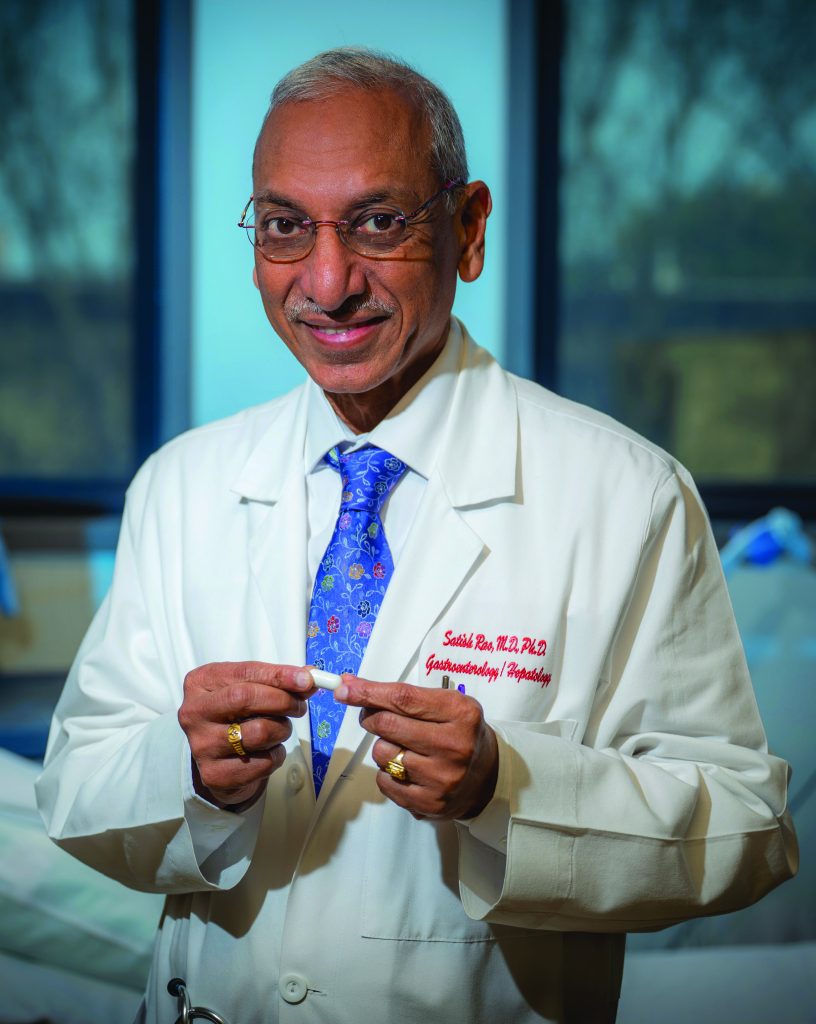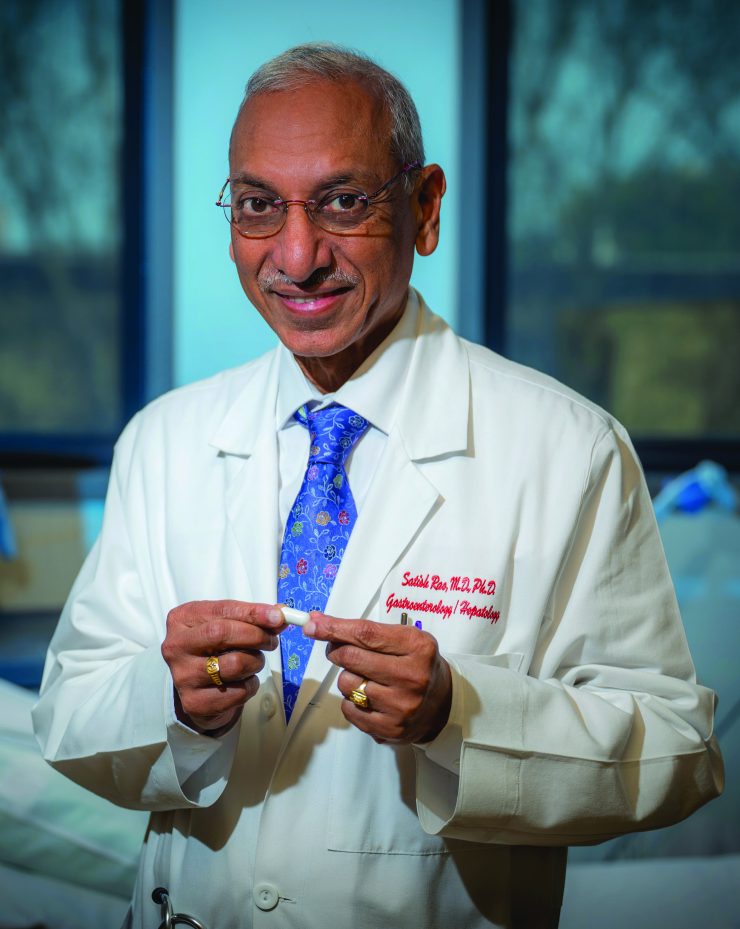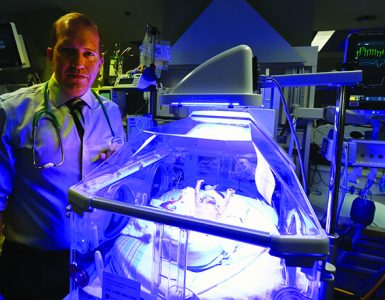
In a study of more than 300 adults at about 90 centers nationally, participants using the vibrating capsule for eight weeks had about twice the number of complete spontaneous bowel movements as those taking a placebo, researchers led by Satish S.C. Rao, MD, PhD, report in the journal Gastroenterology.
For the study, the nearly inch long, traditional-shaped capsules with a latex-free plastic shell, which you swallow like any pill, were preprogrammed to induce
two-hour vibration sessions twice daily and were taken five days per week. The capsules stimulated the colon for three seconds followed by 16 seconds of rest.
After the two daily sessions were complete, the capsules fell silent and passed naturally through the gastrointestinal tract.
“It’s the first of its kind in the entire GI world,” says Rao, director of neurogastroenterology/motility and the Digestive Health Clinical Research Center at the Medical College of Georgia and Augusta University Health.
“First of all, it’s a device, it is not a drug. It’s a nonpharmacological treatment, and secondly it works right in the colon, the target area, where it’s exciting the muscles in the wall of the colon to do their job,” says the study’s corresponding author.
Rao and his colleagues have additional information that the call to action in the colon also can be detected in the brain and that, over time, it may help the colon regain more normal function without additional prompting.
Normal prompts for the colon to get busy include when we wake,up in the morning and when we eat a meal.
“The vibrating capsule is a novel non-pharmacological approach to the management of chronic constipation, a common and challenging problem worldwide,” says coauthor Eamonn Quigley, MD, chief of gastroenterology and director of the Lynda K. and David M. Underwood Center for Digestive Disorders at Houston Methodist Hospital.
Investigators reported 39% of participants using the vibrating pill had one or more complete bowel movements a week versus 22% of those taking a look-alike placebo. Nearly 23% of those taking the active capsule had two or more complete spontaneous bowel movements per week compared to just under 12% of those taking the placebo.
Those using the vibrating capsule also had significant improvement in classic problems like straining, stool consistency and general quality of life compared to placebo takers, the researchers report. No significant side effects were reported. About 11% of participants using the capsule reported experiencing a “mild vibrating sensation” but continued its use, the researchers write. The vast majority found the system easy to use.
Despite advances in drug therapy, there is a tremendous unmet need for better treatments for the problem affecting about 40 million people in the US alone. About half of patients are dissatisfied with their current therapies and willing to try new ones, report study authors who included William D. Chey, MD, from the University of Michigan in Ann Arbor, Anthony J. Lembo, MD, from the Cleveland Clinic in Cleveland, Ohio, and Dr. Amol Sharma, also at MCG and Augusta University Health.
The final, Phase 3 study was funded by the capsule developers, Vibrant Ltd. The pill was approved by the U.S. Food and Drug Administration in August 2022, but the therapy just became available for physicians to prescribe.










